Fairfax County is seeking public input on a new name and brand for Original Mount Vernon High School ahead of its redevelopment.
The county’s Department of Public Works and Environmental Services recently launched a survey that asks community members to consider feelings evoked by a new name, inspirations for the new name and themed word pairings.
The survey is available in English, Spanish and Arabic, and responses will be accepted until this Sunday, Feb. 11.
Mount Vernon District Supervisor Dan Storck says the Board of Supervisors doesn’t have any names in mind for the former school, which is being turned into a community facility, so the survey will help inform the decision-making process.
“[People] can think a bit more focused about the building itself and what its plans are,” Storck said. “We’re truly looking for input…The only name we have is one nobody wants to keep.”
Built in 1939, the Original Mount Vernon High School is listed as a historic place on both the state and national registers, but Fairfax County started exploring options to reuse the building at 8333 Richmond Highway once the long-term lease was vacated in 2016.
Following a master plan finalized in 2019, the county is turning the 84-year-old building into an accessible public facility with teen and senior centers, a gym and early childhood programs as well as educational programs to support workforce development, business incubation spaces, visual/performing arts programs and event spaces.
According to the county’s webpage for the project, the survey is intended to “ensure the new name and brand reflect the vibrancy of the community.”
“Your responses will help [the county] understand the priorities, values and preferences of [the] community and help us develop a new brand identity and name that are appealing to the entire community,” the project webpage reads.
Storck encouraged everyone in the county to take the survey.
“The county overall is funding [the project],” Storck said. “There are lots of folks who used to live in the district who have connections and still visit here.”
Rendering via Fairfax County
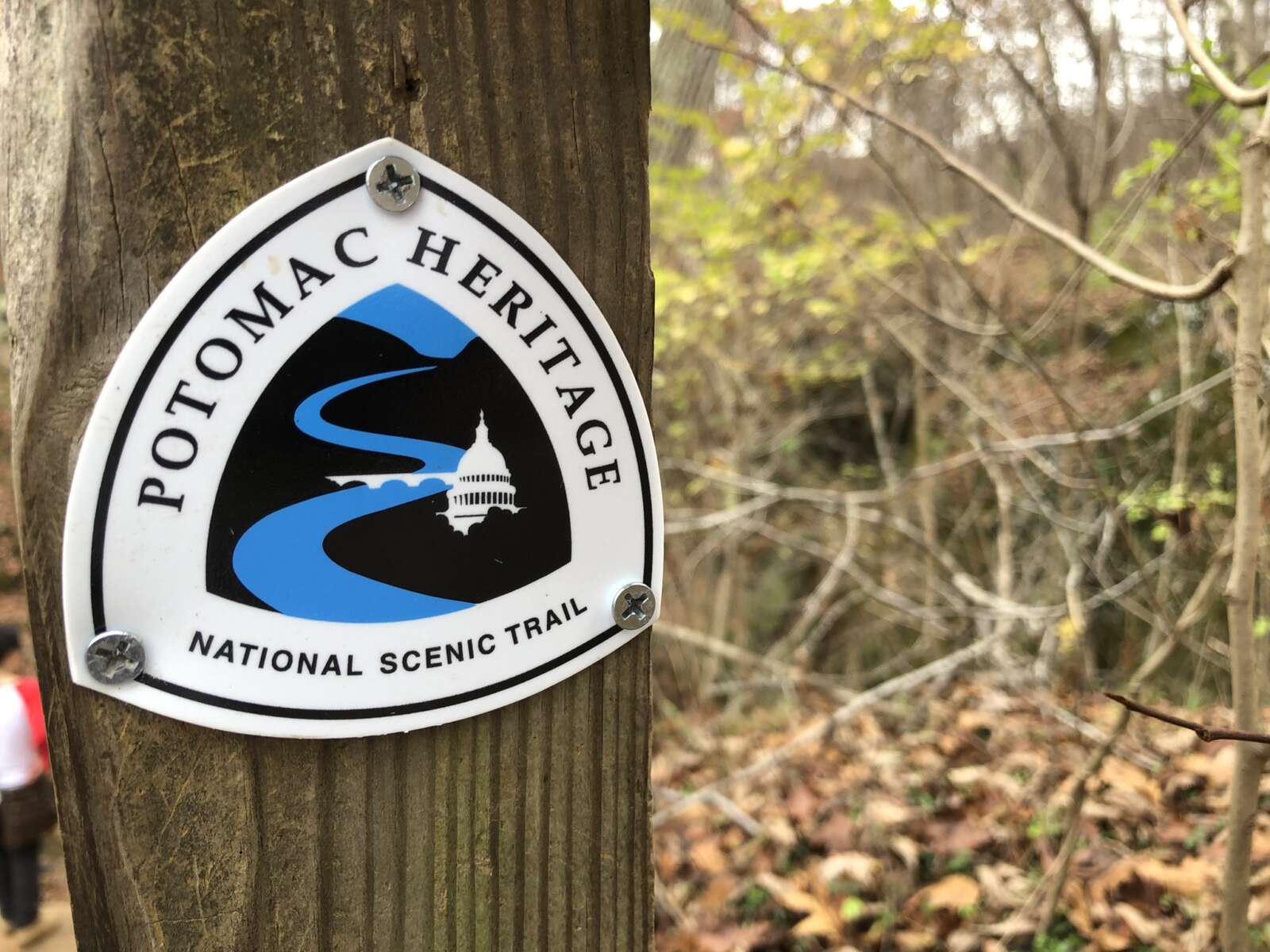
Fairfax County will add its voice to the chorus of local governments touting the presence and benefits of the Potomac Heritage National Scenic Trail.
The Board of Supervisors authorized staff on Tuesday (Oct. 10) to sign an agreement committing the county to developing, maintaining and promoting its segments of the trail, which spans almost 900 miles from the Allegeny Highlands in western Pennsylvania to the Potomac River’s mouth in Northern Neck.
The roughly 137-mile Northern Virginia section includes segments in Great Falls, McLean and along the George Washington Memorial Parkway and Route 1 (Richmond Highway) from the City of Alexandria to Lorton.
“This is a mostly unknown trail connection that we’ve all been working on, believe it or not, for years,” Mount Vernon District Supervisor Dan Storck said before the board’s unanimous vote.
Designated in 1983, the Potomac Heritage Trail is overseen by the National Park Service, but it has enlisted local governments to manage segments in their borders under the memorandum of understanding (p. 413), which was initially developed in 2020.
In addition to Fairfax County, participating localities include Arlington, Loudoun and Prince William counties, along with Alexandria and the towns of Dumfries, Leesburg and Occoquan.
Per the MOU, the county’s park authority and transportation and public works departments will maintain trail segments, place markers at key points like major trailheads, promote the trail with media and way-finding or interpretive exhibits, and report on “visitation, volunteerism, and challenges and needs for completed segments.”
“The purpose of the agreement is to recognize the Trail network in northern Virginia and to realize fully the benefits associated with such recognition, including increased opportunities for outdoor recreation and nonmotorized transportation; for education, health, and heritage tourism; and for contributions to a vibrant regional economy,” county staff wrote in a summary for the Board of Supervisors.
The MOU also directs trail managers to “consider requests to plan, acquire lands and easements for, and develop segments of the Trail within respective jurisdictions.”
Fairfax County recently filled some gaps with the Mount Vernon Highway Trail Project, which added a shared-use path from Route 1 to Southwood Drive and was completed in May.
Storck said at Tuesday’s board meeting that his office has been working over the last few months to adjust some of the new trail segments “so they’re not right on Route 1.”
Working with Fort Belvoir to move its segments off the road has proven to be a challenge due to Defense Department rules on “what you can do and where,” but Storck said there has been “great progress” made on the trail.
“We’ll need to continue [that progress],” he said. “This will be something that gets worked on long after I’m gone, to find better ways to have it be more scenic and less urban…We’re doing the right thing, and as you see, it’s taken 50 years just to get this far, so we’ll keep plugging away.”
According to a trail map maintained by the Northern Virginia Regional Commission, Fairfax County still has gaps in the Mason Neck Trail along Gunston Road, on Old Colchester Road to connect Route 1 to the Mason Neck Peninsula, and between Great Falls Park and Scott’s Run Nature Preserve.
The Great Falls-to-Scott’s Run segment is unfunded, though one needed easement has been obtained at the Madeira School in McLean. The Gunston Road segment will cost an estimated $9 million and has gotten $4 million funded so far.
The route connecting Route 1 and Mason Neck may be tweaked as the county updates its overall trails map as part of its ActiveFairfax Transportation Plan, which is “tentatively” expected to get adopted in 2024, according to NVRC.
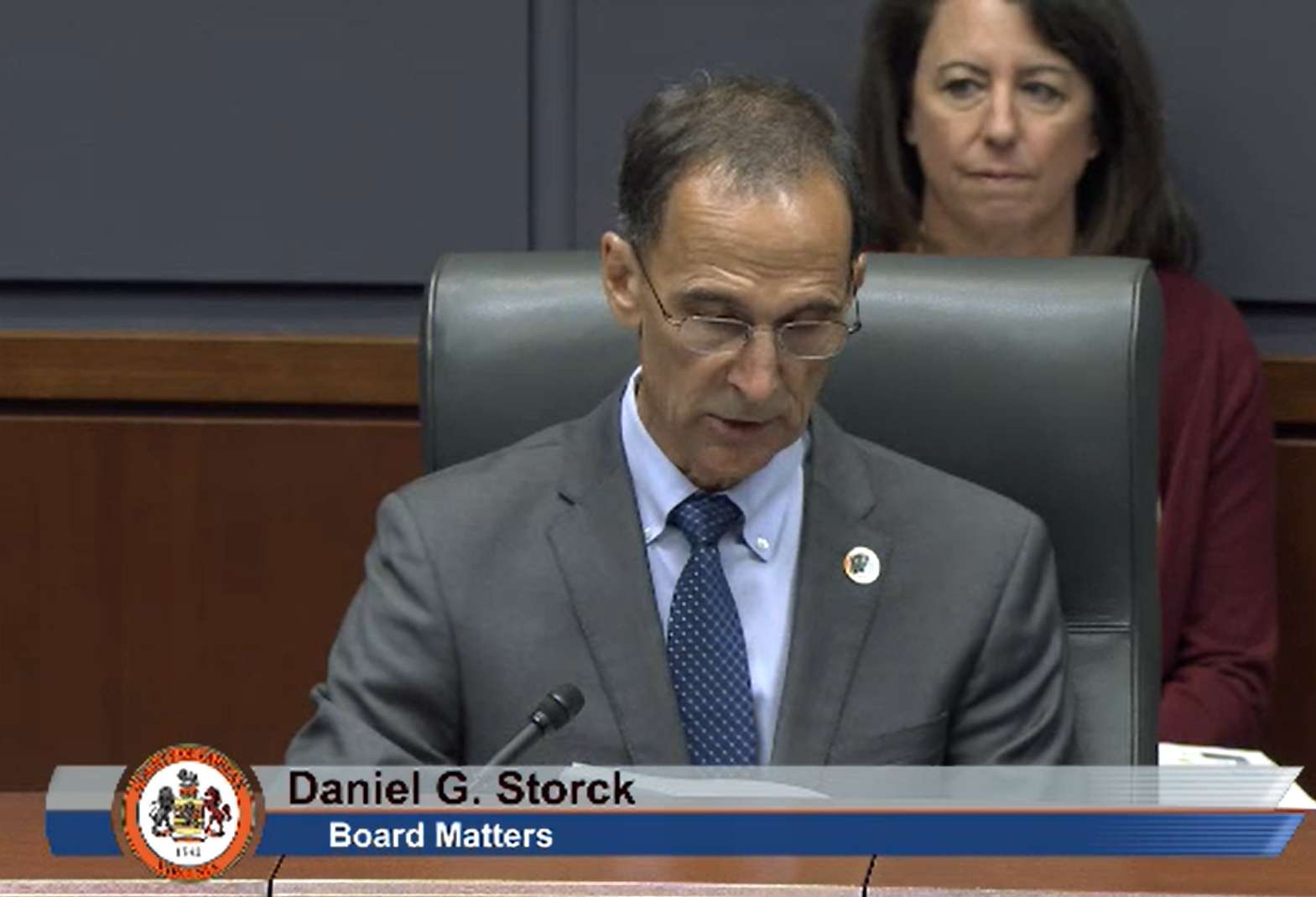
A senior at Langley High School, a county planner who helped craft an environmental plan for Reston, and a local business dedicated to reducing waste are among the recipients of this year’s Fairfax County Environmental Excellence Awards.
Handed out annually since 2000, the awards recognize residents, county staff, businesses and other organizations “who demonstrate extraordinary leadership within the community and exceptional dedication to the preservation and enhancement of the county’s natural resources,” according to the Office of Environmental and Energy Coordination.
Announced at the Fairfax County Board of Supervisors meeting on Tuesday (Sept. 12), the winners were selected by the Environmental Quality Advisory Council, an advisory group appointed by the board. The council administers the awards with OEEC’s support.
“By giving their time, passion and expertise for the betterment of our environment, these awardees are true climate champions,” said Mount Vernon District Supervisor Dan Storck, who chairs the board’s Environmental Committee. “We applaud them for leading by example and helping to ensure that our county residents and visitors can enjoy a healthy and beautiful Fairfax County for decades to come.”
The lone winner in the individual county resident category was Mei Torrey, a rising senior at Langley High School who “promotes and actively seeks opportunities to increase awareness of, and take action on, local sustainability issues,” the OEEC says.
Now president of her school’s Saxons Go Green environmental club, Torrey has organized fundraisers and worked with the nonprofit Clean Fairfax to design and distribute reusable bags to local retailers and low-income communities, according to the county.
The 2023 award lineup features three winners in the “county employee” category:
Hugh Whitehead, an Urban Forester with the Urban Forest Management Division. In 2016, Mr. Whitehead initiated a tree planting program in partnership with Fairfax County Public Schools. Since 2016, a total of 494 trees have been planted at twenty-one different K through 12 schools including seven Title 1 schools. This program not only supports the Board’s Sustainability Initiatives, reforestation goals, and recommendations from the Joint Environmental Task Force, but furthers educational opportunities throughout the county.
Joe Gorney, a Planner with the Department of Planning and Development, Environment and Development Review Branch. Mr. Gorney works collaboratively with other county agencies on a diverse range of environmental review topics, working to create a sustainable future for residents and employees. He was the staff lead for the Environmental Plan guidance update for the Reston planning study, designating Reston as “biophilic” community.
Craig Carinci, Director of Department of Public Works and Environmental Services, Stormwater Planning Division. Mr. Carinci provides excellence in leadership through monitoring and improving stream health. During his tenure as Director, Fairfax County has restored over 100,000 linear feet of streams, facilitated by his open-minded leadership and business acumen that fearlessly encourages his team to push forward on initiatives and collaborate with partners to achieve cost savings.
The Environmental Excellence Awards for organizations and businesses went to Trace the Zero Waste Store, which can be found at 140 Church Street NW in Vienna, and the grounds committee of the Montebello Condominium Unit Owners Association. Read More
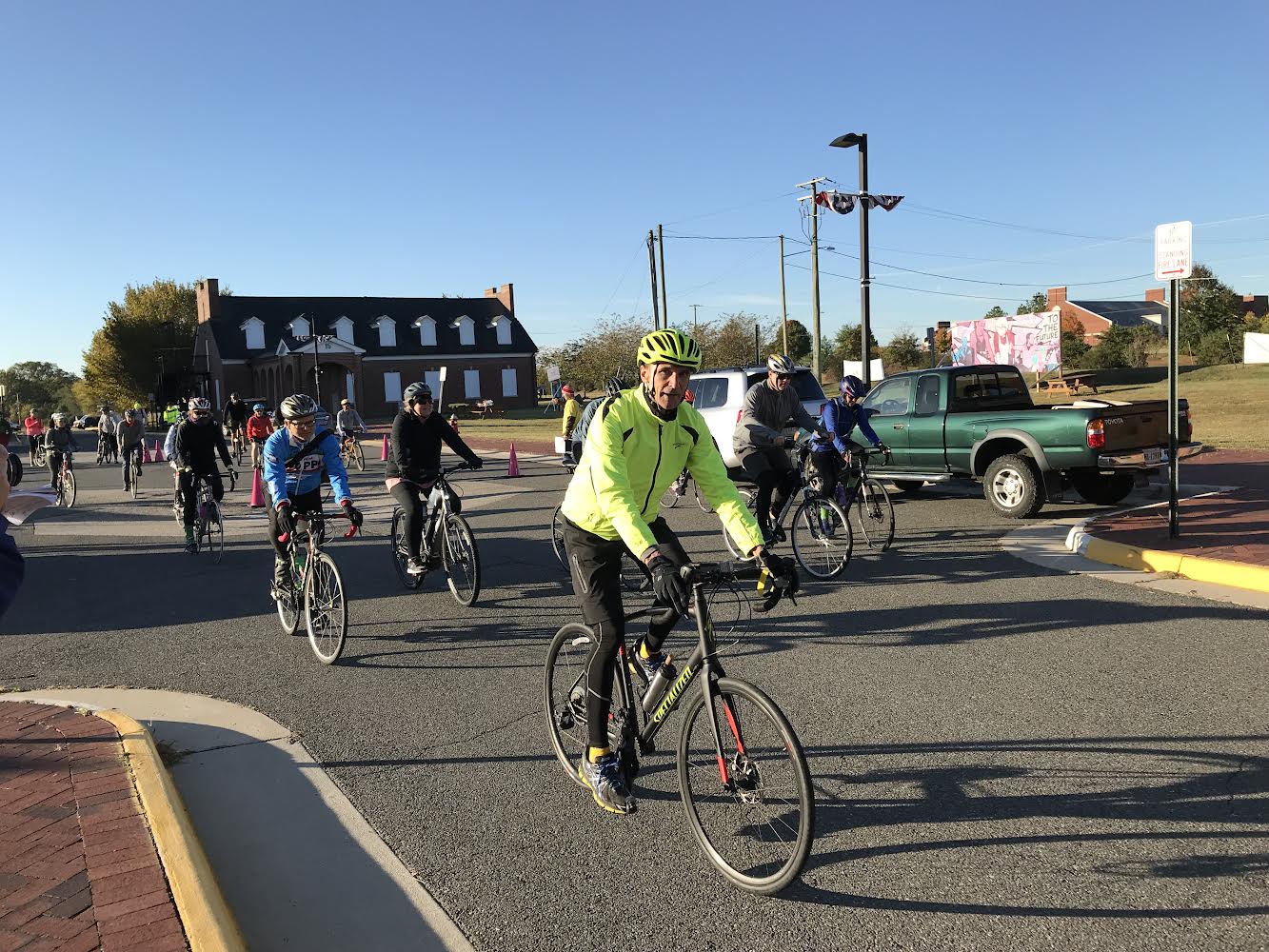
The annual Tour de Mount Vernon will return to the area on Saturday, Oct 21.
Beginning at 8 a.m., the eighth annual community bicycling event encourages riders to take in the closed George Washington Memorial Parkway alongside views of the Potomac River.
The event is organized by Mount Vernon District Supervisor Dan Storck. While more information on the exact route remains to be released, it will include a mix of paved roads, paved trails and some challenging sections. Two options — a long ride of 40 miles and a short ride of 20 miles — will be offered.
Early registration is open until Sept. 1, with tickets costing $30 per rider. A ticket includes event socks, a day pass to George Washington’s estate, one free day pass to Woodland and Pope-Leighey House and a $5 donation to the Fairfax Alliance for Better Cycling (FABB).
Registration from Sept. 2 through Oct. 21 rises to $35 per ride. All of the above perks apply, except there’s no guarantee that the socks will still be available.
Fairfax County is seeking volunteers for the event. While teens between the ages of 15 and 17 are welcome, they must be accompanied by an adult. Helmets and a liability waiver are also required.
The event is sponsored by several organizations, including FABB, George Washington’s Mount Vernon, the Fairfax County Department of Transportation and Celebrate Fairfax.
The eighth annual Tour de Mount Vernon is dedicated to Dave Evans, a father, husband, softball coach, and United Community and Good Shepherd Housing treasurer and board member who inspired the event. He was also the owner and operator of the award-winning business La Prima Catering.
Earlier this year, the county dedicated a ball field to Evans at Walt Whitman Middle School in Hybla Valley.
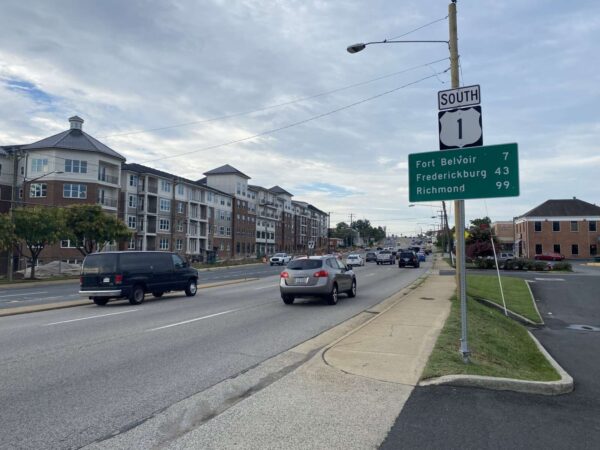
(Updated 10:55 a.m. on 7/26/2023) The ongoing redevelopment of Richmond Highway (Route 1) in Fairfax County has sparked a larger discussion over whether the benefits of road widening projects outweigh their potential harm.
The Virginia Department of Transportation plans to bring improvements to a three-mile stretch in the Richmond Highway corridor in two phases: first from Jeff Todd Way to just north of Frye Road, then from just north of Frye Road to Sherwood Hall Lane.
Notably, the changes will widen Richmond Highway from four to six lanes, which will pave the way for bus rapid transit in the corridor but has garnered some pushback from local community members.
The Coalition for Smarter Growth, which advocates for more “sustainable” transportation methods such as walking, biking and transit in the D.C. region, claimed in a recent press release that “wider roads fail, and the public knows this.”
CSG’s Northern Virginia Advocacy Manager Sonya Breehey says road widening projects create induced demand, arguing that adding more travel lanes incentivizes more people to drive and increases congestion in the long run, despite offering short-term relief.
“The idea is, we get stuck in traffic, so we add travel lanes,” Breehey said. “It’s easy for a few years, but then those travel lanes fill back up and then everybody’s clamoring again for more road widening. It’s a cyclical problem.”
Rep. Don Beyer, who represents the county’s Route 1 area in Congress, told FFXnow in an exclusive interview that he supports road widening projects.
“I think [road widening projects] are an important part of congestion relief,” Beyer said. “There’s an alternative argument…that they will fill up as fast as you build them. That’s certainly been largely true in the metro D.C. area for a long time…but at the same time, I don’t know if it’s still true today.”
In addition to adding travel lanes, the Richmond Highway project reserves median space for future lanes dedicated to The One, a bus rapid transit system that aims to outpace traditional bus services with dedicated lanes and fewer stops.
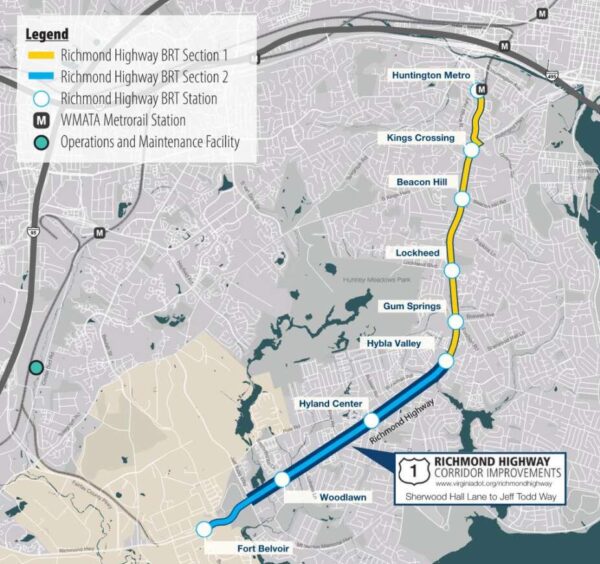
With the BRT expected to be operational in 2030, the Northern Virginia Transportation Commission announced last month that the Commonwealth Transportation Board approved $10 million to help implement the bus system from Fort Belvoir to the Huntington Metro station.
“This billion-dollar investment in a new state-of-the-art transportation system and in the communities along Richmond Highway will revitalize the area and provide more safe, convenient and dependable transportation options for the people who live here,” Mount Vernon District Supervisor Dan Storck wrote in a statement.
Storck says road widening can only be “done right” if it is “in coordination” with “walkable, bikeable communities and mass transit.” Read More
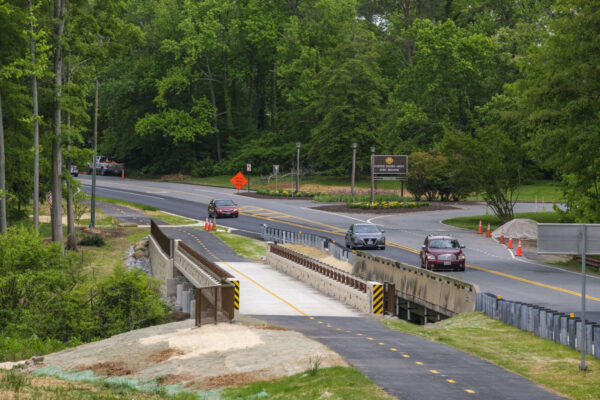
Fairfax County leaders will hold a ribbon-cutting ceremony and an inaugural bicycle ride and walk tomorrow (Friday) to celebrate the completion of the Mount Vernon Memorial Highway Trail.
Mount Vernon District Supervisor Dan Storck will join the Fairfax County Department of Transportation and the Department of Public Works and Environmental Services at George Washington’s Gristmill to mark the finishing of the trail.
The purpose of the project was to complete missing trail segments between Richmond Highway (Route 1) and Southwood Drive, a span of approximately two miles.
The project completes the missing links for the:
- East Coast Greenway Trail
- Potomac Heritage National Scenic Trail
- NoVa Loop Trail
Storck told FFXnow he has been pushing to get the project completed to connect more of the county’s Potomac Banks tourism sites and to provide new transportation and recreation options for residents.
“This new shared-use path now provides a continuous pedestrian and bicycle way from Richmond Highway to George Washington’s Mount Vernon Estate, then north to the City of Alexandria and the District of Columbia,” Storck said. “It will also provide connections to the future ‘The One’ Bus Rapid Transit System.”
The project constructed a 6,400-foot-long, 10-foot-wide shared-use path, which includes a pedestrian bridge adjacent to the Mount Vernon Memorial Highway bridge crossing Dogue Creek.
“The Potomac Heritage National Scenic Trail will provide a continuous facility for pedestrians and cyclists along Mount Vernon Memorial Highway from Route 1 to the Mount Vernon Estates,” the county website states.
The project also provided marked crosswalks and curb ramps compliant with Americans with Disabilities Act (ADA) regulations and standards to improve pedestrian crossings.
The county incorporated comments from a 2018 pedestrian safety public information meeting into the design plans.
“As an avid runner and cyclist, one of my priorities as supervisor has been pedestrian and bicycle safety, and completing missing trail and sidewalk connections,” Storck said.
The locally funded project cost approximately $6.5 million. The ceremony will start at 10 a.m.
Inova Mount Vernon Hospital will open a new behavioral health unit next week, marking an expansion of mental health care along the Richmond Highway corridor.
A ribbon-cutting ceremony was held yesterday morning (Tuesday) for the nearly $10 million facility, which will increase bed capacity at the hospital by 67%.
Close to $4 million was donated by Amyia and Jeff Veatch, a local entrepreneur who founded the engineering firm Apex Systems. The family previously donated money to help modernize the hospital’s emergency room.
Hospital leaders and a number of elected officials attended the ceremony, including Rep. Don Beyer, State Sen. Scott Surovell, Del. Paul Krizek, Mount Vernon District School Board Rep. Karen Corbett Sanders, and Mount Vernon District Supervisor Dan Storck (who had to leave to vote on the county budget).
The Inova Veatch Family Behavioral Health Unit will open to hospital patients on May 16. It will feature 20 additional beds, private rooms, “quiet” spaces, modernized equipment, and enhanced safety features, like impact resistance windows and drywall.
Along with the hospital’s existing adult psychiatric unit, the total capacity for behavioral health patients will now be 50 beds.
As many noted during the ceremony, mental health care and behavioral services have become a priority in Fairfax County, as rates of depression and suicidal thoughts, specifically among young people, have risen drastically in recent years.
“We have a significant shortage of mental health services all over Virginia and especially acute here in Northern Virginia,” Surovell, who represents Hybla Valley, Woodlawn, and parts of Franconia, told FFXnow. “That’s the big reason we need to expand these services. If you don’t have a place for people to go when they need help, it can result in really tragic consequences.”
He called private contributions like the one made by the Veatch family “critical” to expanding care, particularly since behavioral services “are often not the most profitable areas for a hospital to invest in.”
But he said it’s also on the state to make the necessary investments as the need for mental health care continues to skyrocket.
Virginia Gov. Glenn Youngkin has proposed $230 million in this year’s budget for addressing gaps in behavioral health services. Surovell said that doesn’t go far enough.
“This is about half of what we need because the state is so far behind in investing in behavioral health,” he said.
Mount District Supervisor Dan Storck agreed, stating at the ribbon-cutting that “we’ve never done enough” to provide mental health care both locally and across the country. Adolescent care in particular is lacking, he told FFXnow.
“We need more adolescent psychiatry units. Our adolescents are bearing the brunt of Covid,” Storck said. “They need more support than we can provide. Inova is stepping up in their Fairfax hospital, but that’s still inadequate to our adolescent needs.”
Beyer shared that his son suffers from schizophrenia and has been hospitalized “many times” at Inova Mount Vernon Hospital. The additional unit will hopefully provide care to more people in need like his son, he said.
While more resources are needed, the Veatch behavioral health unit and emergency room are potentially life savers for residents of the Richmond Highway corridor, Surovell said.
“They don’t have to travel to either Alexandria [City] or Franconia or Fairfax to get these services,” he said. “Having a facility that’s close can be the difference between life or death for a lot of people.”
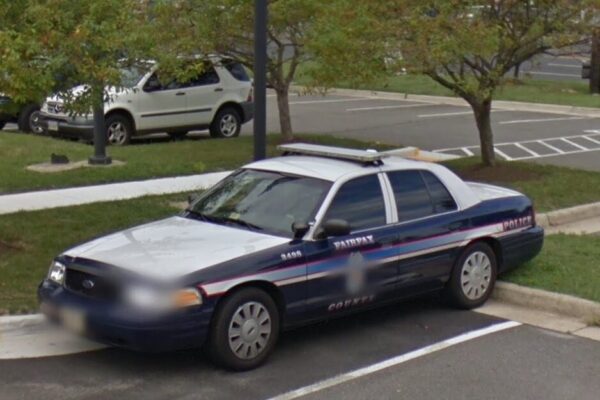
The Fairfax County Board of Supervisors recently honored a local police district that help crack down on a string of car thefts earlier this year.
At a meeting last week, the Board of Supervisors recognized the Franconia District Police Station and the Fairfax County Police Department’s Auto Crimes Enforcement Team.
Mount Vernon District Supervisor Dan Storck said Lorton has seen a rash of vehicle thefts this year.
“Car thefts are on the rise around the region including an apparent coordinated effort around Lorton in January targeting Kia and Hyundai vehicles,” Storck said. “In January alone, 33 vehicles were stolen in Fairfax County.”
Lorton in particular had nine vehicles stolen, Storck said. In response, police increased their presence in the neighborhoods and were able to make two significant arrests in January.
“The Lorton community had a significant number of autos being stolen and the community was very frustrated,” Storck said. “They were teenagers regrettably but fortunately they were then stopped.”
Beyond just the issue of vehicles being stolen, Storck said there were concerns about the stolen vehicles being used in other crimes.
Chairman Jeff McKay said his own car had been stolen years ago and shared the sense of frustration and unease that can bring.
“As someone who had their own car broken into many years ago, I can tell you, the victims of that…feel personal violation,” McKay said. “I don’t think anyone understands what it feels like to have your car stolen. It’s not the same as other crimes committed against persons, but that particular crime against property is a personal intrusion that not only has an effect on people, but has the potential to give the wrong impression about the safety of a community.”
Springfield District Supervisor Pat Herrity said his hope is not only that community members feel safe, but that the crackdown instills a wariness in criminals.
“This is just another example of the quality of our force,” Herrity said. “When we see an issue, we go out and get in front of it and solve it. I think it sends a message we need to send not just to our community… but the message it sends to the bad guys: if you come to Fairfax County, we’re going to get this solved.”
Image via Google Maps
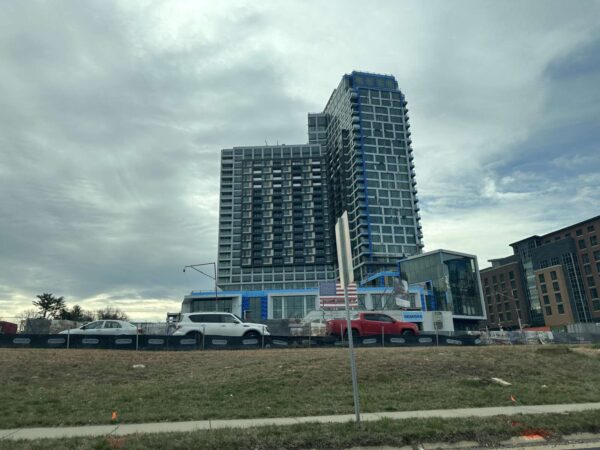
The Fairfax County Board of Supervisors approved a new policy last week that could offer incentives to developers to replace the affordable housing lost to new development.
The new policy wouldn’t just require a one-to-one replacement of units set aside as affordable — known as committed affordable units — but would incentivize the replacement of those that were naturally affordable — meaning market-rate affordable.
In effect, if a new development brings units to a site previously affordable for those making less than the area median income, the developer would be offered incentives to include an equal number of affordable units in the new development. Those incentives could include additional density, building height and financial assistance.
The sole voice against the new amendment at the meeting last Tuesday (March 21) was Springfield District Supervisor Pat Herrity, who said the county can’t subsidize its way out of the regional housing crisis. According to Herrity:
The requirement to replace market-rate affordable units could inhibit the delivery of much needed housing, especially if incentives fail to cover the cost of the preserved affordable units. It’s a lot of those incentives that are basically making housing unaffordable for many of our residents, because those incentives are paid by our residents. Our young adults and our seniors are priced out of housing. We’re not going to be able to do enough government-subsidized housing to fix this problem. Where we need to start is reducing the cost of housing. I’m not going to be supporting this, that’s probably no surprise to the board, but I think there are better ways to attack this problem.
The rest of the board, though, was enthusiastic in its support of the new policy.
“This is a good next step for us,” Mount Vernon District Supervisor Dan Storck said. “The issue is: how do we ensure this distribution of housing is countywide? I think this starts to tackle that issue by highlighting and identifying where those issues and where those needs are. I’m looking to support far more housing that’s affordable in many other areas.”
Storck said the policy is part of the county’s commitment to ensure residents can afford to stay in the county even as overall housing prices continue to rise.
“I have a statement that I say often and my staff will probably roll their eyes when I say this again: we need to make sure we leave no one behind,” Storck said. “If you’ve lived in our community for a while, we need to make sure there are options for you. To get those options, we need to build more housing.”
The policy change was approved in a 9-1 vote.
Following adoption by the Board of Supervisors, staff will work to put together a draft of new guidelines in May and present those to the board later this summer.
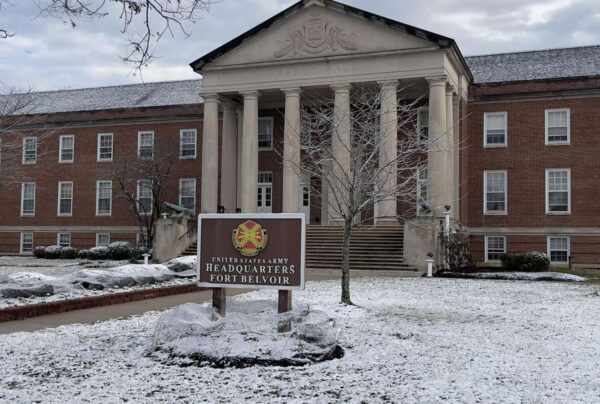
Fairfax County’s Board of Supervisors is no stranger to renaming things, from roads to magisterial districts. But now, the board is leading a push not to rename a site associated with slavery.
In a Board of Supervisors meeting on Tuesday (March 7), Mount Vernon District Supervisor Dan Storck raised the topic of Fort Belvoir’s potential renaming. The base is named for the Belvoir plantation that once occupied the site.
In a final report last year, a Department of Defense Naming Commission recommended that Fort Belvoir be renamed. According to the Association of the United States Army:
One final matter involves Fort Belvoir, Virginia, named for a plantation that once occupied the land. Belvoir has ties to the Confederacy but was not named in 1935 in direct commemoration of the South. The commission was not given authority to rename Fort Belvoir, which was previously known as Fort Humphries, but the commission believes it should have a new name. The report “strongly encourages” the defense secretary and Army secretary to review the history of the installation, noting it was the site of the celebration of Confederate Memorial Day.
While Fairfax County and other localities have routinely renamed locations, the Fairfax County History Commission expressed concerns about the Naming Commission’s report for a few reasons, from questions about historical inaccuracies to uncertainty about the effect on how Black history should be represented at the fort, according to Storck.
“Any action taken by the army should be transparent, based on evidence, and include local community and stakeholders,” Storck said. “Removing the name Belvoir may reduce the likelihood that these stories of the enslaved African Americans and free Black residents who lived on the base will be told.”
Storck proposed that the Board of Supervisors recommend the Fairfax County History Commission’s report be sent to the Secretary of the Army and the Naming Commission Historian voicing their concerns. The proposal was unanimously approved by the Board of Supervisors.
Board of Supervisors Chair Jeff McKay said concerns about the renaming came up in a recent meeting with the base commander. Whatever the ultimate decision is, McKay said the process around the name change should be more transparent and should involve Fairfax County.
“I had an opportunity to sit down with the base commander for quite some time and this was the subject of conversation,” McKay said. “I know it’s created a lot of angst for Fort Belvoir. I think it’s important as this consideration is being made — not by the county — but that county input is part of the decision process.”
A public affairs officer from Fort Belvoir told FFXnow that any consideration of renaming the base will be open and transparent and the Fort Belvoir leadership has already started moving forward on renaming four streets honoring Confederate leaders:
The Naming Commission encouraged the Secretary of Defense and the Secretary of the Army to review the relevant historical facts and consider renaming Fort Belvoir. The Army will begin an open and transparent process to consider renaming the installation.
The redesignation of Beauregard Road, Stuart Street, Lee Road, and Johnston Road fit within the legislative mandate of the Naming Commission. Fort Belvoir has already begun consulting with the local community, through the Fairfax County History Commission, to recommend name changes for the four streets currently named after Confederate leaders.
In October 2022, Secretary of Defense Lloyd J. Austin III concurred with all of the Naming Commission’s recommendations, including redesignating nine Army installations with names that are rooted in their local communities and that honor American heroes whose valor, courage, and patriotism exemplify the very best of the U.S. military.
Fort Belvoir is standing by to assist in that effort as requested.
Photo via Fort Belvoir/Facebook

